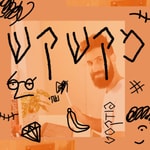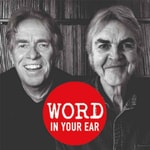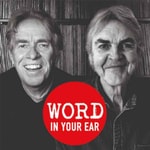Cities and Memory - remixing the world – Détails, épisodes et analyse
Détails du podcast
Informations techniques et générales issues du flux RSS du podcast.

Cities and Memory - remixing the world
Cities and Memory
Fréquence : 1 épisode/0j. Total Éps: 500

Classements récents
Dernières positions dans les classements Apple Podcasts et Spotify.
Apple Podcasts
🇫🇷 France - arts
26/05/2025#91🇫🇷 France - arts
12/05/2025#92🇫🇷 France - arts
11/05/2025#52🇫🇷 France - arts
10/05/2025#34🇬🇧 Grande Bretagne - arts
20/04/2025#96🇬🇧 Grande Bretagne - arts
19/04/2025#70
Spotify
Aucun classement récent disponible
Liens partagés entre épisodes et podcasts
Liens présents dans les descriptions d'épisodes et autres podcasts les utilisant également.
See all- https://www.citiesandmemory.com/heritage
720 partages
- https://www.nts.live/
13 partages
- https://www.jjharrison.com.au/
6 partages
Qualité et score du flux RSS
Évaluation technique de la qualité et de la structure du flux RSS.
See allScore global : 38%
Historique des publications
Répartition mensuelle des publications d'épisodes au fil des années.
BBC Radio 4 Today Programme: Sonic Heritage interview, 18 April 2025
vendredi 18 avril 2025 • Durée 04:26
BBC World Service Newshour: Sonic Heritage interview, 18 April 2025
vendredi 18 avril 2025 • Durée 04:33
In metropoliten
lundi 7 avril 2025 • Durée 12:29
Novosibirsk metro, Russia reimagined by Pavel Lopatin.
Efimero
mercredi 26 mars 2025 • Durée 14:42
"The field recording captures voices, likely of people gathered in a cemetery. These are joyful sounds. Their density suggests a large crowd of all ages coming together. By applying filtering techniques, I extracted pitches and harmonies from these recordings. As a symbol of ephemerality, I chose the conch shell: an instrument with sacred and ancient associations—with the sea, with the call to prayer, with the underworld, the moon, fertility, and the wind god Ehécatl, who had the power to breathe life into a void. Its haunting sound echoes what Patrick Johansson describes as the primordial blast of the world produced in the underworld by Quetzalcóatl, heralding the creation of humankind.
"The extracted pitches and harmonies led me to my existing piece for six conch shells and bass drum, Songs from Rhiannon. [Listen here: https://on.soundcloud.com/JUQX4EzhPDYctXKE6]
"An excerpt of this piece appears after the full field recording. The conch shells continue, transpose, extend, and amplify the voices we hear. They sing a song that transports us to an unearthly space—dark, yet embracing.
"Efímero begins with a female voice reading calaveras, a poetic form written specifically for Día de los Muertos. These verses humorously critique the living while reminding them of their mortality. The recitation transitions to the voice of a young girl expressing wonder and joy, calling the names of the seven archangels as she marvels at the colors, sounds, and scents surrounding the gathered crowd. Her perspective is not from our world. She speaks of the beauty of life but also of her struggle with its fleeting nature—her life was so short.
"The calaveras are read in Spanish by Ainoa Padrón Ortiz. The short text that follows, in Spanish and German, is read by her daughter, Sofía Fuhrmann Padrón.
The conch shells are played by Christine Chapman, Bruce Collings, Bob Koertshuis, Melvyn Poore, Markus Schwind, and the composer Marco Blaauw. The bass drum is played by Dirk Rothbrust.
"It was a great pleasure to work on this project. Listening to the sounds of Oaxaca, to the voices of people gathered for this beautiful tradition, made me feel as if I were there. My ears traveled all the way to Mexico, allowing me to reflect on my own annual traditions, cultural celebrations, and ways of connecting with the dead."
Day of the dead at Oaxaca cemetery reimagined by Marco Blaauw.
———————
This sound is part of the Sonic Heritage project, exploring the sounds of the world’s most famous sights.
Find out more and explore the whole project: https://www.citiesandmemory.com/heritage
Hospicio Cabañas at Guadalajara
mercredi 26 mars 2025 • Durée 03:14
UNESCO listing: Hospicio Cabañas, Guadalajara
Recorded by Erick Ruiz Arellano.
———————
This sound is part of the Sonic Heritage project, exploring the sounds of the world’s most famous sights.
Find out more and explore the whole project: https://www.citiesandmemory.com/heritage
Cathedral bells at Morelia
mercredi 26 mars 2025 • Durée 01:27
UNESCO listing: Historic Centre of Morelia
Recorded by Erick Ruiz Arellano.
———————
This sound is part of the Sonic Heritage project, exploring the sounds of the world’s most famous sights.
Find out more and explore the whole project: https://www.citiesandmemory.com/heritage
Day of the dead at Oaxaca cemetery
mercredi 26 mars 2025 • Durée 02:02
UNESCO listing: Historic Centre of Oaxaca and Archaeological Site of Monte Albán
Recorded by Erick Ruiz Arellano.
———————
This sound is part of the Sonic Heritage project, exploring the sounds of the world’s most famous sights.
Find out more and explore the whole project: https://www.citiesandmemory.com/heritage
Echoes of Petra
lundi 24 mars 2025 • Durée 06:57
"What stood out most in the field recording was its immersive quality. The binaural technique captured not just the sounds themselves but the space around them. The way sound interacts with Petra’s towering sandstone walls—bouncing, fading, and morphing—created a natural sonic landscape that felt rich and evocative. There’s something profoundly intimate about listening to a place in this way, as if you’re standing right there, experiencing it firsthand. I wanted to highlight these spatial nuances in my composition, allowing the listener to be transported into the heart of Petra.
"Petra is one of the world’s most famous archaeological sites, visited by thousands of tourists every day. Yet, beyond its visual grandeur, there’s an acoustic identity that is often overlooked. My composition seeks to explore this sonic heritage—the way sound shapes our perception of place and history. By blending the raw field recordings with music, I aimed to create a bridge between the real and the imagined, drawing attention to the sounds that make Petra unique.
"This piece also reflects on the role of sound preservation in the context of tourism. As modern life encroaches upon historical sites, their soundscapes change. What does Petra sound like today, and how might that evolve in the future? By capturing these moments and integrating them into a new form of expression, I hope to contribute to a deeper appreciation of sound as a cultural artefact.
"I approached the composition as a dialogue between the past and present, the natural and the electronic. The field recording serves as the foundation, woven throughout the piece in layers—sometimes as an unaltered soundscape, other times manipulated to create rhythmic or textural elements. I used granular synthesis to stretch and transform certain ambient sounds, bringing out hidden harmonics and details. Downtempo beats were introduced to give the piece a sense of movement, while spoken word elements emerged organically, inspired by the echoes of voices captured in the recording.
"Reverb and spatial processing played a key role in maintaining the three-dimensionality of the original sound. Rather than simply layering sounds, I wanted to preserve the recording’s depth, allowing elements to drift in and out as if they were part of a living, breathing environment.
"For me, this composition is more than just an artistic experiment—it’s a way of engaging with place, memory, and time. Petra is a site of wonder, but it’s also a space of transience, where footsteps fade, conversations dissolve, and the desert winds slowly reshape the land. Through this piece, I wanted to capture that ephemeral quality, offering a sonic reflection on the impermanence of experience.
"By blending the rawness of the field recording with musical elements, I hope to invite listeners to hear Petra in a new way—to step into its sonic world, to imagine its stories, and to reflect on the significance of sound in shaping our connection to history and culture."
Petra soundscape reimagined by Nies.
———————
This sound is part of the Sonic Heritage project, exploring the sounds of the world’s most famous sights.
Find out more and explore the whole project: https://www.citiesandmemory.com/heritage
Hagerty incident
lundi 24 mars 2025 • Durée 03:14
"Tobata, an industrial port in southern Japan, was often the site of such demonstrations and protests, many of which were related to the Anpo struggle (安保闘争, Anpo tōsō).
"One of the most infamous moments of the Anpo struggle was the 'Hagerty Incident', in which U.S. Ambassador to Japan Douglas MacArthur II (the nephew of the famous general) deliberately provoked an international incident by ordering his car to be driven into a large crowd of protesters. The provocation backfired and chaos ensued.
"The right of people to gather and protest, celebrate, or commemorate is a fundamental right with cultural, political, and social significance. The sounds we create in doing so are an essential part of our sonic heritage."
Tobata lantern festival reimagined by Simon Kennedy.
IMAGE: JKT-c, CC BY 3.0 <https://creativecommons.org/licenses/by/3.0>, via Wikimedia Commons
———————
This sound is part of the Sonic Heritage project, exploring the sounds of the world’s most famous sights.
Find out more and explore the whole project: https://www.citiesandmemory.com/heritage
Butterfly effect: weeping and flying; llorando y volando: mariposas monarcas
lundi 24 mars 2025 • Durée 06:48
"What is the sound of butterflies?
What is the sound of butterflies? What is the sound of millions and millions of monarch butterflies as they open wings and ascend into the air? What is the sound of zero monarch butterflies?
"Monarch butterflies have been part of my life for over 30 years in two places in North America that I have called home (both places of migration from my childhood home of Britain). I have experienced eastern monarcas in their tens of millions in the high forested mountains of the state of Michoacán, Mexico, where the Monarch Butterfly Biosphere Reserve is located. I have experienced a few western monarchs in the eucalyptus trees on the cliffs above the Pacific Ocean, in Goleta, California, where the Ellwood Monarch Butterfly Reserve is located. Both the State of Michoacán and the City of Goleta use the gorgeous orange and black form of the monarca butterfly as their logo.
"In Michoacán, Mexico, these multitudes of eastern monarcas follow a migratory pattern across many generations, encompassing the three countries of North America: Mexico, United States and Canada. In Goleta, United States, these tiny numbers of western monarcas follow a short migratory pattern from the coast to the Rockies. In December 2024, the official count was zero. As pollinators, monarch butterflies contribute to healthy ecosystems across North America.
"In the 1990s, as a researcher, creative artist and violinist, I had the privilege of learning from the wisdom and lifeways of Indigenous P’urhépecha peoples in Michoacán, whose presence spans many centuries. I learned from my experience of being a visitor to El Rosario, in the high forested mountains, where millions and millions of monarca butterflies blanket every trunk and branch. This is the World Heritage Site of the Monarch Butterfly Biosphere Reserve. Known only to local villagers and landowners until 1975, now a global tourist attraction and UNESCO World Heritage Site.
"Before sunrise, with closed wings, their motionlessness and quietness radiate a profound tranquility. In their fragility and robustness, they are breathtaking. As earth turns, moment by moment, a transformation unfolds as the sun’s rays bath each tree, causing warming, waking, stirring, and movement. Bark and trees seemingly come alive, as millions and millions of wings open, rise and cascading upwards, forming ascending and fluttering clouds of orange and black.
"Why do you cry, little human baby?
¿Porque estás llorando, pequeño bebe humano?
Are you crying for your soul? ¿Estás llorando por tu alma? Por tu futura? For your future?
What have we humans done to this planet? ?Que hemos hecho a esta planeta -
"Listen, Escucha, listen, escucha,
to infinite sounds of millions and millions of monarch butterflies in Mexico
a los sonidos infinitos de millones y millones de mariposas monarca en México
"Listen, Escucha, listen, escucha,
To the sound of zero monarch butterflies in Goleta, California
al Sonido de zero mariposas monarca en Goleta, California
Silencio, silence, silencio, silence, silenco, silence –
"In Michoacán, Mexico, the Indigenous Purhépecha grandmothers tell how their ancestors walked from the cold lands to the centre of the country. When the children and old people could go no further, they covered their bodies with the orange resin of the trees and the yellow pollen of the flowers to keep themselves warm. The pollen and resin transformed them into monarch butterflies, and they flew together to the lands of the Monarch Butterfly Biosphere Reserve.
"En Michoacán, Mexico, las abuelas Indigena P’urhépecha dicen como sus ancestros caminaban desde la tierra fria al centro del pais. Cuando los niños y la genta vieja no pudieran caminar mas, cubrieron sus cuerpos con resina anaranjada de los arboles y el polen Amarillo de los flores para mantenerse calientes. Y el polen y la resina los transformaron a mariposas monarcas y volaron juntos a la tierra de la reserva biosfera de la mariposa monarca.
"weeping and flying; llorando y volando/ monarch mariposas–butterflies monarcas
"But what is the sound of monarch butterflies? The field recording by renowned Mexican sound recordist Erick Ruiz Arrellano intrigued me. What did Erick record in this most extraordinary of locations, El Rosario Monarch Butterfly Biosphere Reserve in Michoacán? I was overwhelmed by the sound of a human baby crying. I decided to use the human baby crying as the core sound, in all the repetition, alarm, which seems to come at once from the depths of the ocean and crosses through all of human time.
"In this most extraordinary of ecosystems, biospheres and heritage places, where millions and millions of fragile beings, here a human baby cries.
Why are they crying?
Are they crying for their future?
Are they crying for the disappearance of earth’s heritage, the heritage of monarcas who have inhabited this planet for so much longer than humans?
Are they crying because we tourists and visitors, in our quest to hear and see earth’s transitions and journeys, disrupt and impose our own desires before our ancestor-beings?
Are they crying because we humans cause devasting loss of habit, through so-called development, through massive farming complexes, herbicides, insecticides, shopping malls…
"And do they hear us ? Yes – they hear us through veins in their wings
¿Y las mariposas nos escuchen? Sí – nos escuchan através de las venas en sus alas."
El Rosario butterfly sanctuary reimagined by Ruth Helliert.
———————
This sound is part of the Sonic Heritage project, exploring the sounds of the world’s most famous sights.
Find out more and explore the whole project: https://www.citiesandmemory.com/heritage







